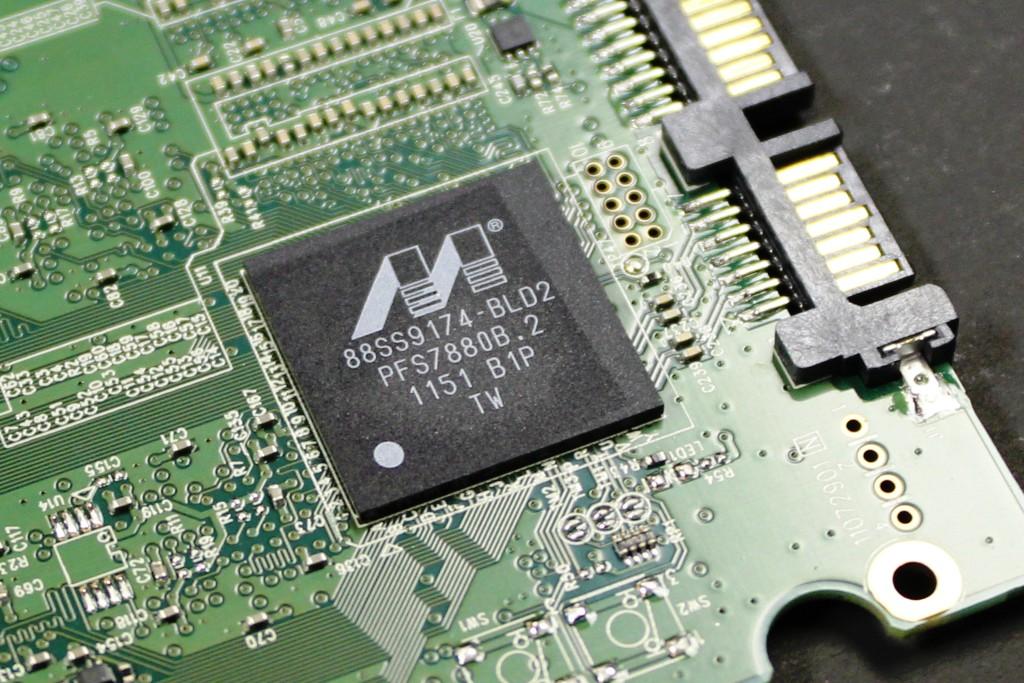REPORT ANALYSIS AND FINAL THOUGHTS
We put the Plextor M3 through its paces, and come away very impressed. As part of this test, we migrated an operating system from a SSD that is in constant use for the site. This system is just used for writing up articles, processing pictures, email, internet, and general usage. While not used for compiling any of the results that we have seen here, we used the test bench for that, we just wanted to experience the M3 under normal usage that we feel that 90 percent of our readers will experience.
Under this normal usage for a week the drive proved to be very snappy and responsive, much more responsive than other drives that we have used.
The constant Marvell v SandForce comparisons that are made usually center around bandwidth measurements. This can be a bit misleading, as the Marvell controllers as a whole have much better latency, sometimes they are twice as fast. Basically each drive has its strengths, with the Marvell controlled drives enjoying much faster latency, but lower overall bandwidth. For users, the question is which type of drive that they will experience better results from, and sometimes that becomes dependent upon their usage patterns.
Even amongst the Marvell powered drives, the Plextor M3 stands out of the pack in terms of access times. The .038 access time that we have seen recorded with AS SSD is simply excellent. The access times are an important measurement that translates directly into the snappy and responsive feeling that users experience when starting up the computer, and when loading the vast majority of programs. With the approach that Plextor has taken with their firmware implementation with this SSD, the drive simply sings.
Perhaps more impressive are the solid gains that Marvell has managed to make in the bandwidth department, closing the gap between themselves and the SandForce drives. The attention to the sustained long term performance of the SSD with their True Speed technology also addresses the performance issues that many SSDs suffer over extended periods of use.
In normal application, one would be hard pressed to find a better drive in my opinion. There are many competitors out there, but the line in the sand usually has either a Marvell on one side, or a SandForce on the other. Depending upon the preference of the customer, with some comparing it to the old Ford v. Chevy disputes, they will decide which is the drive best suited for their tastes.
When it comes to the Marvell drives, the Plextor M3 is amongst the top of the pack. With a 100 year history of the company, in fact they started out in silk manufacturing all the way back in 1918, users can rest assured that they will be around to honor the impressive Five-Year Warranty that is included with this product.
With the increasing amount of competitors in the SSD market, and the dizzying amount and variations of drives that are offered, one of the most important aspects that is driving consumer choice is the reliability of the device. With a warranty period that matches the longest offered amongst competitors, and beats many many others, the Plextor M3 is obviously a very reliable drive. Adding in the fact that it is positively a hotrod in terms of general usage and latency, and the Plextor M3 becomes a sure bet!
 The SSD Review The Worlds Dedicated SSD Education and Review Resource |
The SSD Review The Worlds Dedicated SSD Education and Review Resource | 


How does the M3 compare to the M2?
The M2 is 480/330 read/write and 15K/9K IOPS. The M3 is 510/360 read/write and 70K/65K IOPS. Also, the M2 comes bundled with the Acronis software where as the M3 is bundled with NTI Echo. Both drives have the same Marvell controller. However the M3 uses a Toshiba 24nm NAND as opposed to a Toshiba 32nm NAND found in the M2.
whats the different between Plextor M3 and M3P ?
The M3P is essentially the M3S but with a different firmware which increases performance from 525/445 read/write to 535/450 and from 56K/30K IOPS to 56K/34K IOPS on the 512GB. Also, I believe the M3P is housed in a 7mm casing as opposed to a 9.5mm casing.
If Marvell = faster latency but also lower bandwidth, does that mean if I’m RAID-0’ing 2 SSDs (for higher bandwidth speeds), I’d be better off with a Marvell controlled pair of SSDs rather than a pair of SandForce controlled ones?
Not sure how to answer this question but you can check out the M2 RAID benchmark results https://www.plextoramericas.com/index.php/forum/27-ssd/4716-128-gb-m2p-benchmarks?limit=6&start=18#4734